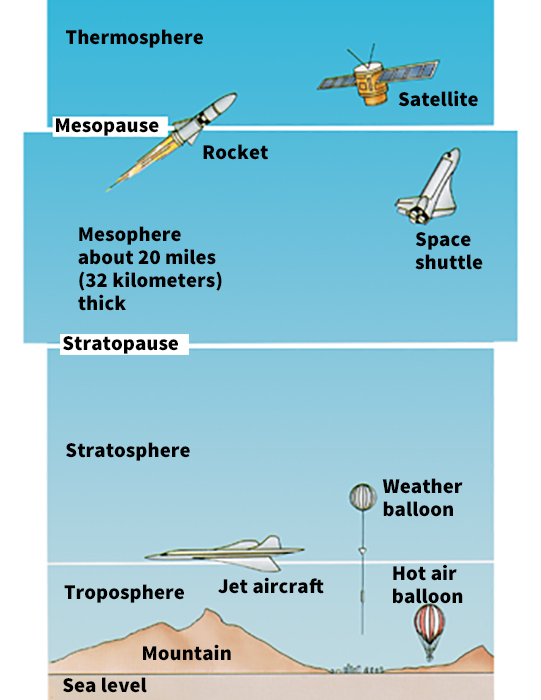Mesosphere, << MEHS uh sfeer, >> is the region of Earth’s upper atmosphere in which temperature drops with rising altitude. It lies above the stratosphere and below the thermosphere, the uppermost temperature region. The mesosphere begins at an average altitude of about 30 miles (50 kilometers). It ends at the mesopause, at an altitude of about 50 miles (80 kilometers).

The decline in air temperature in the mesosphere results from a falling concentration of ozone, a form of oxygen. Ozone in the stratosphere absorbs the sun’s ultraviolet rays, heating the lower mesosphere. As altitude rises, the temperature falls along with the amount of ozone. Temperatures range from about 32 °F (0 °C) at the base of the mesosphere to about -130 °F (-90 °C) at the mesopause.
The lowest temperatures in Earth’s atmosphere occur at the mesopause. Above the poles, summer temperatures at the mesopause can drop below –200 °F (–130 °C). The mesopause gets coldest in summer because winds and storms cause waves of air to form in the troposphere, the lowest atmospheric layer. Such waves travel upward and break in the mesosphere like waves breaking on a beach, causing the air over the pole to rise and cool.
The mesosphere is too high for balloons and airplanes to travel there. Scientists can only directly measure the layer by rocket. As a result, they primarily use space- or ground-based studies of radiation reflected or given off by the mesosphere. Evidence for waves in the mesosphere comes from the wavy patterns of clouds in the layer and the zigzag trails of meteors passing through it.
